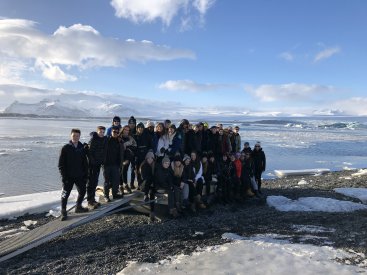Key Stage 5
Key Stage 5
This Key Stage is delivered across two years at two years: Year 12 and Year 13.
Contact time
Students will have nine hours teaching across a two week period.
Students will study:
- The history of at least two different countries, including Britain.
- At least two hundred years of History.
Arden students will follow the Edexcel syllabus (Route G). It is our opinion that this mixture of topics meet the criteria we have been given in the most meaningful way, offering a range of themes and linking well to the GCSE syllabus. More details of the specification can be found at www.edexcel.org.uk.
How will I be assessed?
Paper 1: Breadth study with interpretations |
Paper 2: Depth Study |
|
30% A Level/60% AS Level |
20% A Level |
|
Exam duration: 2 hours 15 minutes |
Exam duration: 1 hour 30 minutes |
|
Germany and West Germany 1918-1989 |
The rise and fall of fascism in Italy c1911-1946 |
|
Assessment: |
Assessment: |
|
Section A: one breadth essay Section B: one breadth essay Section C: one interpretations question |
Section A: one source question Section B: one depth essay |
|
|
|
Paper 3: Themes in breadth with aspects in depth |
Coursework |
|
30% A Level |
20% A Level |
|
Exam duration: 2 hours 15 minutes |
N/A |
|
The British experience of warfare c1790-1918 |
Independent enquiry on pupils choice of Germany |
|
Section A: once source question Section B: one depth question Section C: one breadth essay |
3000-4000 word essay |
Paper One: Germany and West Germany, 1918 – 89
The focus of study is on development and change and so the content is presented as themes spanning the period in question. This option also contains a study in depth of historical interpretations on how far Hitler’s foreign policy was responsible for the Second World War, which includes; the influence of German history on Nazi foreign policy, Hitler’s ideas and his role in the shaping of Nazi foreign policy, the reasons for the German invasion of Poland in 1939 and the contribution of other nations to the outbreak of war.
1 Political and governmental change, 1918–89
- Creation, overcoming challenges to, and the collapse of the Weimar Republic (1918 – 33.)
- Establishing a Nazi dictatorship and the nature of the Nazi government before and during World War Two (1933 – 45.)
- Return to democratic government; creation of the Federal Republic of Germany (FRG), consolidation and maintaining political stability (1945–89.)
2 Opposition, control and consent, 1918–89
- Opposition to the Weimar government, in Nazi Germany and political dissent and active challenge post World War Two.
- Attempts to control extremism in Weimar Germany, censorship and repression in Nazi Germany and the constitutional and legal response to political extremism in post-war Germany.
- The nature of support for the Weimar constitution and Nazi regime, the use of propaganda and the de-Nazification policies of the western allies and the nature of support for democracy in the FRG.
3 Economic development and policies, 1918–89
- Economic crises and the Weimar government’s response (1918–23,) policies for recovery (1924–28,) the impact of, and response to the Great Depression (1929–32) and changing living standards (1918–32.)
- Nazi economic recovery (1933–36,) creating a command economy (1936–39,) changing living standards (1933–39) and the impact of war (1939–45.)
- Post-war economic recovery (1945–55,) the ‘economic miracle’ (1955–66,) surviving economic challenges (1966–89,) integration into the European economy (1949–89) and changing living standards (1945–89.)
4 Aspects of life in Germany and West Germany, 1918–89
- The role and status of women in the Weimar Republic, the impact of Nazi policies before and during the Second World War and the role and status of women in the FRG.
- Education and cultural experimentation in the Weimar Republic, Nazi education and cultural policies and education in the FRG, including post-war re-education policies and cultural and generational tensions in the FRG.
- The status of, and attitudes towards, ethnic minorities in the Weimar Republic, Nazi racial policies (including the Final Solution) and the status of, and attitudes towards, ethnic minorities in the FRG.
Paper Two: The rise and fall of fascism in Italy, c1911–46
1 The liberal state, c1911–18
- Italy in the early twentieth century as a ‘great power,’ Giolitti’s government in 1911, its growing instability (1912–14) and the impact of the First World War (including the significance of victory.)
2 The rise of Mussolini and the creation of a fascist dictatorship, 1919–26
- Challenges to the Liberal State including Mussolini, the development of fascism (1919–22) and the nature and extent of its support.
- Mussolini gaining power (1920–22,) his appointment as Prime Minister and the creation of a fascist dictatorship (including control of the PNF; the Acerbo Law and the Matteotti crisis; repression in 1925 and constitutional amendments (1925–26.)
3 The fascist state, 1925–40
- Indoctrination, press control, censorship, propaganda and the cult of il Duce (including the influence of fascist culture, repression and terror and anti-Semitic decrees.)
- Political and economic interests and policies, the shift towards fascist economics and the response to the Depression (autarky, the ‘battle for births’ and the ‘battle for grain’.)
- Relationship with the Catholic Church, church support for the regime and church-state tensions in the 1930s.
4 Challenges to, and the fall of, the fascist state, c1935–46
- Mussolini’s foreign policy aims, the impact of foreign policy success and failure before 1934 and relations with Britain, France and Germany.
- The invasion of Abyssinia and its consequences, intervention in the Spanish Civil War and its consequences, diplomatic breakdown of Stresa Front and the move towards Germany, domestic tensions and Italian neutrality, 1939–40.
- Impact of the Second World War, 1940–43: failures in France, North Africa, the Mediterranean; disaster in Greece; war economy and military weaknesses; political tensions 1943; Allied invasion of Sicily; Mussolini deposed.
- Democracy restored, 1943–46: the Allied invasion, the Republic of Salo and the government in the south; German surrender and Mussolini’s death; the outcomes of the referendum and elections 1946.
Paper Three: The British experience of warfare, c1790–1918
- This option comprises of two parts: the aspects in breadth focus on long-term changes and contextualise the aspects in depth, which focus in detail on key episodes. Together, they explore the British experience of war in different aspects of major overseas conflicts and the changing relationship between the state and the people. Within the primarily military focus on the experience of warfare, this option also gives students the opportunity to explore its political, social and economic dimensions and their part in generating pressure for change.
Aspects in breadth: the changing role of government in preparing the nation for war, c1790 – 1918
1 Changes in organising the military
- The military and reasons for changes 1790-1918: improvements to army organisation, ordnance and supplies, the navy and changes in organisation, and government reforms .
- The recruitment of the fighting forces 1790-1918: impressment, volunteers and conscripts .
2 Changes in the role of the people
- Changing weaponry 1790-1918: the role of science and technology in improving weaponry .
- The populace and the war effort 1790-1918: providing finance and changing civilian roles (from camp followers to an organised home front.)
Aspects in depth: Britain at war overseas
1 Britain and the French Wars, 1793– 1815
- Facing the French threat on land: the role of Wellington in the defeat of the French.
- Facing the French threat at sea: the role of Nelson in the defeat of the French.
- The impact on the British economy, industry, commerce and agriculture of the length of the conflict.
2 The Crimean War, 1854–56
- Facing the Russian threat in the Crimea: the impact of the battles of Alma and Balaclava and the siege of Sebastopol; the role of Lord Raglan.
- The effectiveness of the work of Florence Nightingale and Mary Seacole in the Crimea.
- Changing attitudes of the public in Britain to the conduct of the war, including the impact of the photography of Roger Fenton and the reportage of William Russell.
3 The second Boer War, 1899–1902
- Facing the Boers in southern Africa: the nature of British army; the significance of the sieges of Mafeking, Kimberley and Ladysmith and the impact of Black Week.
- The importance of the roles of Field Marshalls Roberts and Kitchener, and General Sir Redvers Buller in achieving victory.
- Changing attitudes of the public in Britain to the conflict, including the impact of the reportage of Winston Churchill and the work of Emily Hobhouse.
4 Trench warfare on the Western Front, 1914–18
- Reasons for change from a war of movement to attrition; entrenchment and the building of defensive systems; the need for military adjustment; the use of new fighting techniques and new technology – machine guns, chlorine gas, tanks, fuse 106 and the creeping barrage.
- British public perception of, and changing attitudes to, war on the Western Front; government attempts to restrict, direct reportage by journalists from the Western Front.
- The significance of Haig’s major offensives for the conduct of the war and attitudes to it: the Somme in 1916, Passchendaele in 1917, the Hundred Days’ Offensive in 1918.
5 The war in the air, 1914–18
- The impact of aerial reconnaissance: photographic, observation and communication.
- The development of the Royal Flying Corps as a fighting force; the importance of technology in the development of air combat; the importance of air power in achieving victory in 1918.
- The impact on public opinion, propaganda and defence systems of Zeppelin and Gotha bombing of undefended British towns.
Coursework Aspect
For the coursework aspect of their History A Level, students complete an independent enquiry on their choice of focus within the topics they have studied on Germany. They produce a 3000-4000 word essay with guidance from a ‘link teacher’ within the department.
What can I do with this subject?
History at A Level is a well-respected discipline that encourages students to think, argue, discuss communicate and challenge. It combines with many other subjects and can provide a contrast with others. A Level History is accepted by Higher Education institutions to be a challenging discipline and is favourably looked upon. History acts as a platform for careers in law, politics, civil service, the media, management, and education among many others.
















